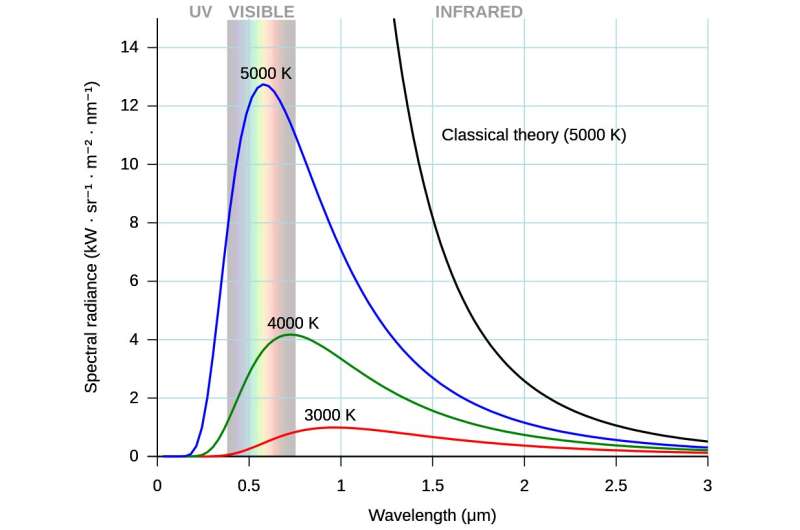This article has been reviewed according to Science X's editorial process and policies. Editors have highlighted the following attributes while ensuring the content's credibility:
fact-checked
peer-reviewed publication
trusted source
proofread
New analysis shows atoms slow down more within colder blackbody radiation

New analysis shows that atoms will encounter high frictional forces in the presence of blackbody radiation at lower temperatures. Accounting for this effect could help researchers to improve the accuracy of high-precision experiments.
Blackbody radiation (BBR) contains electromagnetic waves with characteristic spectra, which changes shape depending on the temperature of the body. When moving atoms encounter these fields, they experience a repulsive force which slows down their movement towards the source of the radiation.
Through new analysis published in The European Physical Journal D, Vipul Badhan and colleagues at Guru Nanak Dev University, India, show that the influence of this "blackbody friction force" (BBFF) is particularly strong at lower temperatures.
The influence of BBFF could become particularly strong in high-precision experiments involving atoms and nuclei: from atomic clocks and interferometers to quantum sensors and gravitometers. It is also expected to affect the behaviors of atoms in the remnants of supernovae, and could even impact the cutting-edge techniques used to probe some of the most fundamental aspects of the universe: including dark matter and gravitational waves. An improved understanding of BBFF could be crucial to ensuring the best possible accuracy in these important experiments.
Atoms can encounter BBFF in the presence of stray electromagnetic fields produced by experimental setups, as well as the materials used to shield experiments from their surroundings. To explore this effect, Badhan's team considered the slowdown of alkali atoms: metals which readily polarize in response to surrounding electromagnetic fields due to their unique electron configurations. By considering this behavior, the researchers could calculate a relationship between the temperature of an object producing BBR, and the rate of slowdown experienced by surrounding alkali atoms.
Their results showed that this slowdown is most heavily influenced by BBFF at lower temperatures. By accounting for this effect, Badhan's team hope that cutting-edge experiments could improve their accuracy even further—potentially bringing us a step closer to answering some of the most pressing questions about the nature of the universe.
More information: Vipul Badhan et al, Assessing slowdown times due to blackbody friction forces for high-precision experiments, The European Physical Journal D (2022). DOI: 10.1140/epjd/s10053-022-00585-2
Journal information: European Physical Journal D
Provided by Springer





















